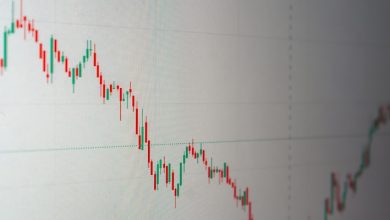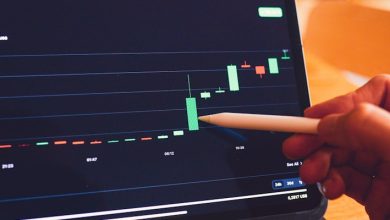The Role of Crypto Derivatives: Futures and Options Explained

- Understanding the Basics of Crypto Derivatives
- Exploring the Differences Between Futures and Options in Cryptocurrency Trading
- The Benefits and Risks of Using Crypto Derivatives in Investment Strategies
- A Guide to Leveraging Crypto Derivatives for Speculation and Hedging
- Regulatory Challenges Surrounding Crypto Derivatives Market
- Case Studies: Successful Trading Strategies Using Crypto Futures and Options
Understanding the Basics of Crypto Derivatives
Cryptocurrency derivatives are financial contracts that derive their value from an underlying asset such as Bitcoin or Ethereum. Two common types of crypto derivatives are futures and options.
Crypto futures are contracts that obligate the buyer to purchase an asset at a predetermined price on a specific future date. This allows investors to speculate on the price of a cryptocurrency without actually owning it. Futures can be used to hedge risk or to bet on the future price movement of a particular cryptocurrency.
Crypto options, on the other hand, give the buyer the right, but not the obligation, to buy or sell an asset at a predetermined price on or before a specific date. Options provide more flexibility than futures because they allow investors to choose whether or not to exercise the contract.
Both futures and options are popular among cryptocurrency traders because they offer opportunities to profit from both rising and falling markets. However, it is essential for investors to understand the risks involved in trading crypto derivatives, as they can be highly volatile and complex instruments.
Exploring the Differences Between Futures and Options in Cryptocurrency Trading
When it comes to cryptocurrency trading, understanding the differences between futures and options is crucial. While both are types of derivatives, they have distinct characteristics that appeal to different types of traders.
Futures contracts involve an agreement to buy or sell an asset at a specified price on a future date. In the world of cryptocurrency, futures allow traders to speculate on the price of digital assets without actually owning them. This can be advantageous for those looking to hedge their positions or capitalize on price movements.
Options, on the other hand, give traders the right, but not the obligation, to buy or sell an asset at a predetermined price within a set timeframe. This flexibility can be attractive to traders who want to limit their downside risk while still having the potential for significant gains.
Both futures and options can be powerful tools in a trader’s arsenal, offering unique ways to profit from the volatility of the cryptocurrency market. By understanding the differences between the two, traders can make informed decisions that align with their trading strategies and risk tolerance.
The Benefits and Risks of Using Crypto Derivatives in Investment Strategies
When considering incorporating crypto derivatives into investment strategies, it is essential to weigh the benefits and risks involved. Crypto derivatives, such as futures and options, offer investors the opportunity to speculate on the price movements of cryptocurrencies without owning the underlying assets. This can provide a way to hedge against potential losses or to amplify gains.
One of the key benefits of using crypto derivatives is the potential for increased leverage. By using derivatives, investors can control a larger position with a smaller amount of capital, allowing for the possibility of higher returns. Additionally, derivatives can offer greater liquidity compared to trading the underlying assets directly, making it easier to enter and exit positions quickly.
However, it is crucial to understand that along with the benefits come significant risks. The leverage provided by derivatives can amplify both profits and losses, meaning that while there is potential for higher returns, there is also a higher risk of losing more than the initial investment. Additionally, the volatile nature of the cryptocurrency market can lead to sudden and unpredictable price movements, further increasing the risk involved in trading derivatives.
Investors should also be aware of the regulatory environment surrounding crypto derivatives, as this can impact their ability to trade and the level of protection available. It is important to thoroughly research and understand the specific terms and conditions of any derivative contracts before entering into a trade to mitigate potential risks.
A Guide to Leveraging Crypto Derivatives for Speculation and Hedging
Crypto derivatives such as futures and options play a vital role in the cryptocurrency market, providing traders with opportunities for speculation and hedging against price fluctuations. Leveraging crypto derivatives can help investors manage risk and potentially increase profits in volatile market conditions.
When it comes to speculation, traders can use crypto derivatives to take advantage of price movements without owning the underlying asset. Futures allow investors to place bets on the future price of cryptocurrencies, while options give them the right to buy or sell assets at a predetermined price. By using these financial instruments, traders can profit from both upward and downward price movements.
On the other hand, hedging with crypto derivatives involves mitigating risk by offsetting potential losses. For example, if a trader holds a large amount of Bitcoin and fears a price drop, they can use futures contracts to sell their holdings at a predetermined price, protecting themselves from losses. Options can also be used to hedge against adverse price movements, providing insurance against market volatility.
Overall, understanding how to leverage crypto derivatives for speculation and hedging is essential for navigating the complex and unpredictable cryptocurrency market. By incorporating these financial instruments into their trading strategies, investors can better manage risk and optimize their returns in an increasingly digital and decentralized financial landscape.
Regulatory Challenges Surrounding Crypto Derivatives Market
The regulatory challenges surrounding the crypto derivatives market are significant. As this market continues to grow and evolve, regulators are faced with the task of ensuring that these financial products are traded in a fair and transparent manner. One of the main concerns is the potential for market manipulation, given the decentralized and often opaque nature of the cryptocurrency market.
Regulators are also concerned about the lack of investor protection in the crypto derivatives market. Unlike traditional financial markets, where investors are afforded certain rights and protections, the crypto market operates largely outside of the regulatory framework. This leaves investors vulnerable to fraud, manipulation, and other forms of misconduct.
Another regulatory challenge is the issue of jurisdiction. Because cryptocurrencies are borderless by nature, it can be difficult for regulators to determine which jurisdiction has authority over a particular crypto derivative. This can create regulatory gaps and inconsistencies, leading to uncertainty and confusion for market participants.
Despite these challenges, regulators are beginning to take steps to address the issues surrounding the crypto derivatives market. Some jurisdictions have introduced new regulations specifically targeting crypto derivatives, while others are working to adapt existing regulatory frameworks to cover these products. This is a positive development that could help to bring greater stability and legitimacy to the crypto derivatives market.
Case Studies: Successful Trading Strategies Using Crypto Futures and Options
Exploring case studies of successful trading strategies using cryptocurrency futures and options can provide valuable insights for traders looking to optimize their investment strategies in the crypto market. By analyzing real-world examples of how traders have effectively utilized these derivative products, investors can gain a better understanding of the potential benefits and risks associated with trading crypto futures and options.
One successful trading strategy that has been employed by many traders is arbitrage, which involves taking advantage of price differences between different cryptocurrency exchanges. By simultaneously buying and selling the same cryptocurrency on different exchanges, traders can profit from small price differentials. This strategy can be particularly effective when using futures and options, as these derivative products allow traders to leverage their positions and increase their potential profits.
Another common trading strategy that has proven successful in the crypto market is trend following. This strategy involves identifying and following the direction of a trend in the price of a cryptocurrency. By using technical analysis and other tools to identify trends, traders can enter positions that align with the market’s momentum, increasing the likelihood of making profitable trades. Futures and options can be used to amplify the potential gains from trend following strategies while also managing risks effectively.



